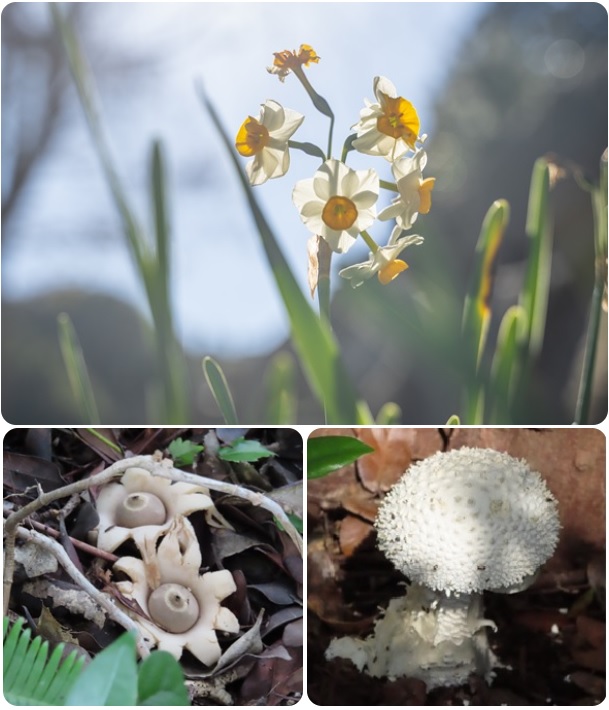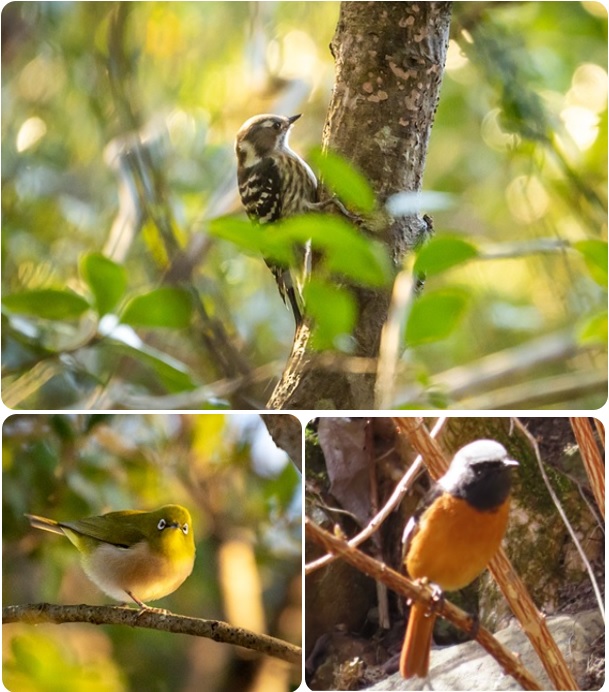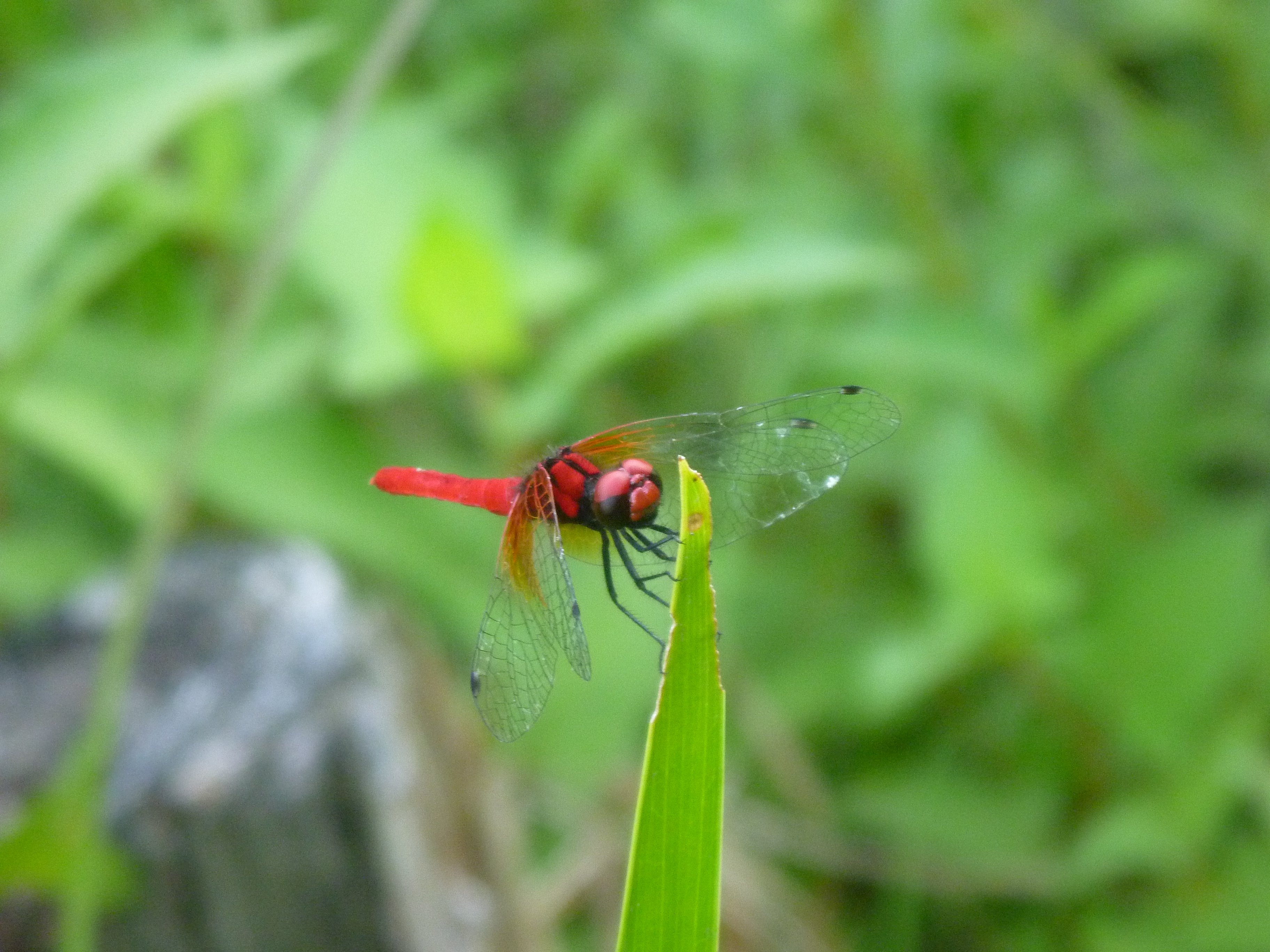Nature and Creatures
- TOP
- Nature at Yokoyama View Point and Park
- Nature and Creatures
Nature in Yokoyama: Forest
The forest around Yokoyama View Point is mostly broadleaf evergreen trees, which thrive in the mild climate that results from the warm Kuroshio Current. Over the centuries, residents further shaped the forest in this region to meet their needs, creating a satoyama—a woodland area managed for resources and sustainability.
The most common tree in the Yokoyama forest is the ubame-gashi oak. Residents have favored this evergreen oak since ancient times for its hard, dense wood, which is ideal for making the hard charcoal known as binchotan. The ring-cupped oak (ara-kashi), on the other hand, was used for firewood. The acorns from these oaks also nourish squirrels and other animals in the forest.
Other trees and shrubs along the walking trails include:
- Japanese cheesewood (tobera): An evergreen shrub with white flowers
- Red bayberry (yamamomo): In spring, its new leaves are reddish; in early summer, it bears red fruit
- Hinoki cypress (hinoki): Felled for timber, most famously at Ise Jingu Shrine; in past centuries, people building a new house would plant a few hinoki saplings to replenish the forest’s resources
- Harlequin glorybower (kusagi): A deciduous shrub with white flowers accented by pink calyxes; its leaves give off a pungent smell when damaged

Nature in Yokoyama: Flowers and Fungi
The Yokoyama forest is filled with flowering plants that bloom at different times of the year. Collecting flowers or plants in the Yokoyama View Point area is not permitted, but visitors are welcome to admire them from the walking trails.
One of the best-known flowers of Yokoyama is the three-leaved azalea (koba no mitsuba-tsutsuji). This deciduous rhododendron bush blooms with bright pink flowers along the walking trail from the Yokoyama Visitor Center to the Ago Bay View Point each April and May. A cherry blossom (sakura) grove and a hydrangea (ajisai) garden can also be found in the Sozo-no-Mori area.
Other flowers in the Yokoyama area include:
- Japanese pink lily (sasayuri): White or pale pink blossoms from June to July
- Japanese swertia (senburi): Tiny white blossoms in autumn; they bloom close to the walking trail, where the canopy overhead is thinner
- Balloon flower (kikyo): Blue blossoms in summer
- Hime-kohone, a species of Japanese splatterdock: Yellow blossoms in summer
Mushrooms and other fungi play an important role in the forest, breaking down organic matter into nutrients that other creatures can use. They are most common in the wetter months between June and September but can appear at any time of year.
Mushrooms commonly found in the Yokoyama area include:
- Earthstar: Known as “earth chestnuts” (tsuchi-guri) in Japanese, with distinctive star-shaped collars
- Shelf fungus: Various members of a fungi family known as “monkey seats” (saru no koshikake) in Japanese due to their shape
- Turkey tail: Known as “tile mushrooms” (kawara-take) in Japanese

Nature in Yokoyama: Birds and Other Fauna
The forested slopes of Mt. Yokoyama are home to many birds and other animals. Some visit the Yokoyama area only in certain seasons, while others live there all year round.
Among the birds, the Japanese white-eye (mejiro) is a permanent park resident. In spring, it sips nectar from flowers. In winter, it joins other species such as the pygmy woodpecker (kogera), the long-tailed tit (enaga), and the varied tit (yamagara) to form small mixed bands that search the tree branches for food. Winter is the best season for birdwatching in Yokoyama, because it is easier to see into the forest once the deciduous trees have shed their leaves.
Visitors looking out across Ago Bay from one of the observation decks may see black kites (tobi). In winter, ospreys (misago) catch fish just under the surface of the water. Grey herons (aosagi) often visit the wetlands and ponds in the Sozo-no-Mori area to prey on fish and frogs.
Some frogs that can be found around Yokoyama are:
- Brown frog (aka-gaeru)
- Japanese tree frog (Nihon ama-gaeru)
- Dark-spotted frog (tonosama-gaeru)
- Schlegel’s green tree frog (Schlegel ao-gaeru)
The mammals of the Yokoyama area are more elusive. Deer can sometimes be heard calling deep in the forest, and boars leave telltale muddy smears at the side of walking trails when rooting for food. Japanese squirrels may scurry along the trails in the early morning when acorns are in fruit. However, they usually only reveal their presence in the form of what residents jokingly call “fried shrimp.” These are the cores of gnawed pine cones, stripped of their nutritious seeds and left lying on the trail.

Nature in Yokoyama: Insects
Insects have their own role in the Yokoyama area’s ecosystem.
Starting in early spring, butterflies often flit along the walking trails, using them as tunnels through the forest. Swallowtails like the red Helen (monki ageha) and the Chinese peacock (karasu ageha) are most common. Later in the year, chestnut tigers (asagi madara) pass through Yokoyama on their migration south.
In summer, the park fills with dragonflies and their relatives, including:
- Scarlet dwarf (hatcho tonbo): The world’s smallest dragonfly, with a wingspan of 20 millimeters
- Golden-ringed dragonfly (oni yanma): The largest dragonfly in Japan, which roams higher elevations in search of prey
- Blue-tailed forest hawk (oshiokara tonbo): Known for its dazzling azure abdomen
- Monosashi tonbo: This species has no English name. Its Japanese name means “ruler dragonfly” because the regular white stripes on its abdomen look like the measurement marks on a ruler.
Reddish-brown little stag beetles (kokuwagata) and Japanese rhinoceros beetles (kabutomushi) can also be found on the trees in summer, much to the delight of children visiting the park.
Some insects are more often heard than seen. For example, haru-zemi (Terpnosia vacua), a kind of cicada active in spring, blackish cicadas (kuma-zemi), and evening cicadas (higurashi) fill the air with their mating calls from spring through summer. Then, as the weather turns cooler, their sounds give way to the katydids (kirigirisu) and crickets (koorogi), whose chirping is an essential part of the traditional Japanese autumn evening soundscape.


